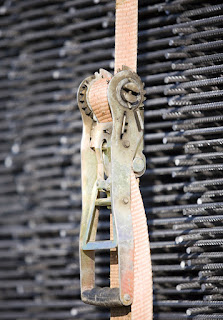Controlling traffic and ensuring workplace safety
The term "traffic control" refers to the monitoring of people, commodities, or vehicles in order to guarantee efficiency and safety. The movement of people and products from one area to another is known as traffic. The movement usually takes place along a designated facility or pathway, referred to as a guideway. It might be a physical guideway, such as on a train, or a pre-determined or defined route indicated either electronically (just like in aviation) or geographically (as in the maritime industry). Accepting pedestrian mobility necessitates the use of human force and the use of a vehicle of some kind that can transport people, goods, or both. Road, rail, air, and marine are examples of vehicle kinds, which are commonly referred to as modes of transportation.
The controllers are usually clustered together to govern huge numbers of traffic lights, either at city crossroads or on-ramps approaching expressways and motorways, together with computers, communications equipment, and detectors to count and measure traffic. While the specific brand and kind of kit may differ, the systems' operations are typically constant. A computerized control system consists of four fundamental components: a computer, communications devices, traffic signals, and related equipment, and vehicle detection detectors. The detectors gather up traffic flow data from the road and provide it to the computer system for processing. To operate all of these technologies, an individual must complete the Load Cargo Securement Flatbed Online Course of Life, and our workplaces a premium on health and a clean environment.
Every
workplace places a high value on this. Something has to be done to encourage
employees, employers, and businesses to prioritize safety, health, and the
environment. The most important thing is that we are committed to taking action
and making appropriate adjustments to ensure that safety, health, and the
environment are front of mind for everyone. As a result, chainsaw
safety training course enables engineers to
understand how they may contribute to the understanding of safety, health, and
the environment. Doing research on the selected topic, collecting data,
evaluating data, and selecting a good case study as an example are the methods
utilized in creating the report (doing the task). Workplace safety should be a
top priority. We must maintain workplace safety in order to reduce the chance
of accidents occurring. Every employee has a responsibility to ensure that
nothing goes wrong while doing the work. When anything happens, businesses must
invest a significant amount of money either in a new design or in compensating
the victims.


Comments
Post a Comment